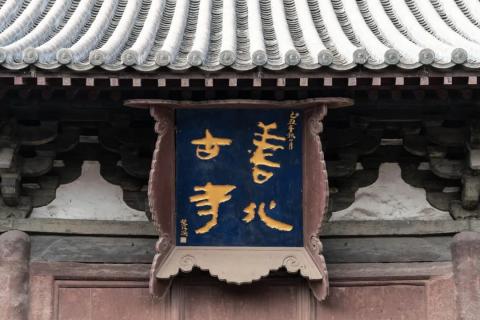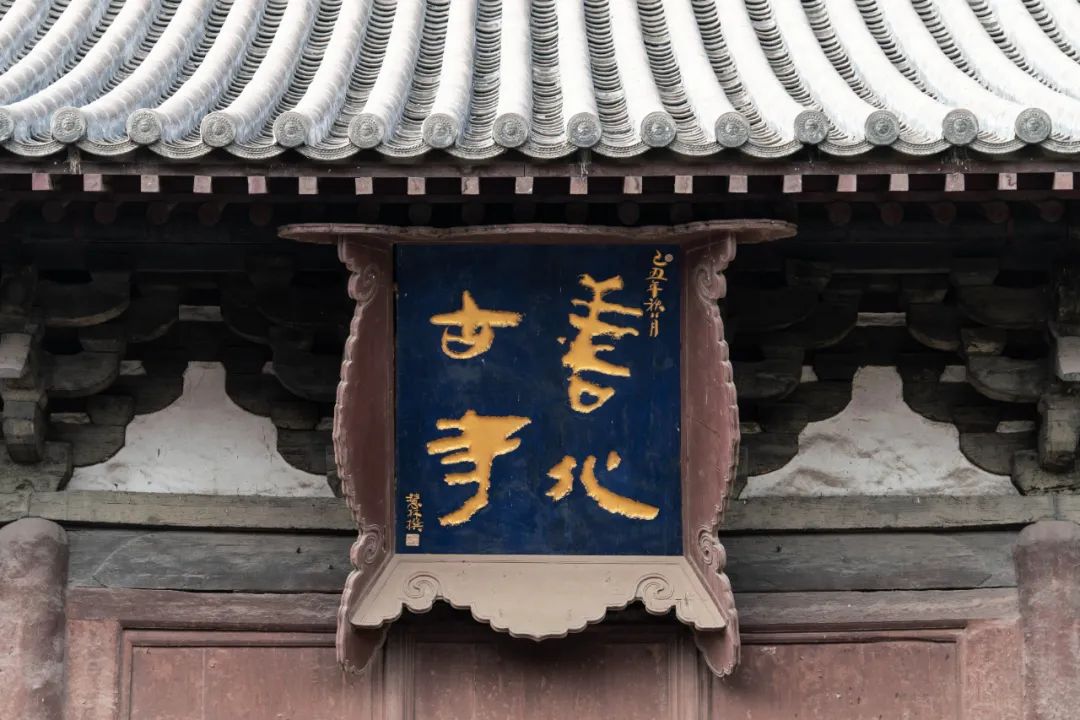
Shanhua Temple is located a little west of the south gate of the ancient city of Datong. It covers a small area, but it is the largest, highest-standard, and best-preserved ancient building complex of the Liao and Jin Dynasties in my country.
The Temple It was founded during the Kaiyuan Period of the Tang Dynasty and was named Kaiyuan Temple. It was renamed Da Pu'en Temple in the early Later Jin Dynasty. The temple was destroyed by war in the second year of Baoda Period of the Liao Dynasty (1122) and was rebuilt during the Tianhui and Huangtong Periods of the Jin Dynasty (1128-1143). After being rebuilt again in 1445, the tenth year of Zhengtong Period of the Ming Dynasty, the temple was renamed Shanhua Temple.
On March 4, 1961, Shanhua Temple was included in the first batch of key cultural relics protection units in the country.

Shanhua Temple Gate
The temple faces south and the main building is arranged very strictly along the central axis.
When entering the temple, you first see the Shanmen and Tianwang Hall, which are combined into one. This mountain gate is the largest existing early wooden mountain gate in my country (the gate of Dule Temple in Tianjin is the earliest). It has a single eaves verandah roof and a high level of shape.

Front view of the Three Holy Temples
Walking towards the north, the second main hall on the central axis is the Three Holy Temples. It has a golden structure and a single-eaves verandah roof. is built on a platform about one meter high. It is five rooms wide and three rooms deep, 28 meters long and 13.5 meters wide. There are doors in the middle rooms, windows in the second rooms, and retaining walls in the later rooms.

The overhanging eaves of the southeastern roof of the Three Holy Temples
Before entering the Three Holy Temples, the originally sultry and turbid weather suddenly became clear and clear. The copper bell at the top of the eaves jingled in the wind.

Maintenance staff
Under the eaves, there are huge, complicated and exaggerated diagonal beams. This is also the most recognizable feature of the Three Holy Temples.

Statues in the Three Holy Temples
Enshrined in the Three Temples are the three sages of Huayan, namely Vairochana Buddha, with the attendant Bodhisattva on the left, Manjushri, who is famous for his wisdom; and the attendant Bodhisattva on the right, Samantabhadra, who is famous for his great deeds.
There are three central rooms in the Buddha statue hall. In front of the fan wall is a brick platform, with Buddha statues on top, Tathagata in the middle, and Bodhisattvas on the left and right. To the left and right of the Tathagata, there are still two attendants. The Tathagata has a golden body, while the Bodhisattva is painted with elixir. The shape of the statue seat is exactly the same as that of the Main Hall. In the center of the front part of the brick platform, there is a little protrusion, which holds a small image of the Tathagata and his attendants. It seems to be a superfluous thing with snake legs. Behind the fan wall is Skanda. In the northeast corner of the hall, there are statues of Emperor Guan. (Liang Sicheng: "Survey Report on Ancient Buildings in Datong")
Then there is the Main Hall. The hall is a relic of the Liao Dynasty and rebuilt in the Jin Dynasty. It is built on a platform more than three meters high. It has a single eaves veranda roof, seven rooms wide and five rooms deep. It is 40.8 meters long and 26.18 meters wide. On the top, there are bell and drum towers on the left and right, and a wooden archway with three doors in the middle.

Owls and birds

Main Hall
Photography is not allowed inside the hall, and the control is very strict. In fact, as long as the flash is not used, it will have no impact on the cultural relics. However, the light in the temple is dim. From the management's point of view, one size fits all may be a simpler and more effective method.

Humen
Inside the Palace On the altar in the middle, there are five golden clay statues of Tathagata, sitting on lotus pedestals. The twenty-four gods on both sides have different expressions, and no two are alike. There are two flat caissons in the center of the ceiling, which are much larger than the ordinary caissons. The carving is exquisite.

Painted sculptures in the palace

Kite outside the palace

Corridors on both sides
After visiting the main hall, I met a tabby cat.

Walking towards each other
In the flower bed next to it, there is a little black cat that was just born.

The expression is a bit sad
Probably a mother and son pair.

wary eyes
It is said that the visual effect will be better if you climb the city wall to see Shanhua Temple. Unfortunately, time was limited and I was unable to do so.
